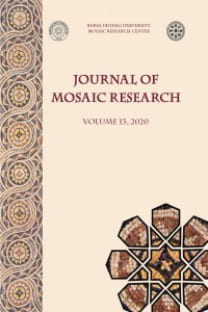Türkiye’de Mozaik Sanatın Çağdaşlaşması
Türkiye’de mozaik sanatının gelişimi Cumhuriyetle birlikte, Atatürk’ün sanata ve tarihe verdiği önem ve öngörüsüyle başlamıştır. İlk kazı ve restorasyon çalışmaları, yurtdışından getirilen arkeologlarla başlatılmıştır. Kendi arkeologlarımızın da yetiştirilip çalışmaların sürekliliği sağlanmıştır. Yine bu dönemde çıkan “Güzel Sanatlar Kanunu” ile mimar ressam birlikteliğine yer verilmiştir. İtalyan Kültür Heyeti 1960 ve 1970’de antik ve modern olan iki Ravenna sergisini Türkiye’ye getirmiştir. Arkeologlarımızın gün ışığına çıkardığı mozaik-ler, güzel sanatları mimariyle kaynaştırmayı amaçlayan Bauhaus okulunun felsefesi 1960 sanatçılarımızı etkilemiştir. Bu kanun vesilesiyle 1955-1970 yılları arasında sanatçılarımız ilk özgün modern mozaik eserle-rini, mimariye uygulamışlardır. Bauhaus etkisiyle “Tatbiki Güzel Sanatlar” (bugünün Marmara Üniversitesi GSF) kurulmuştur. Bu okul mimaride çok başarılı eserler üreten sanatçılar yetiştirmiştir.
Anahtar Kelimeler:
Güzel Sanatlar, Çağdaş Mozaik, Özgün Sanat, Mozaikte Eğitim, Bauhaus Okulu, Mimari
The Modernization of Mosaic Art in Turkey
IIn Turkey, improvement of the mosaic art started in the Republic period with the help of far-sighted Atatürk who has attached great importance to history and art. The first excavation and restoration works started with foreign archaeologists. During that period, local archaeologists were also trained in order to keep these excavations up and running. Again in this period, Architect-Painter Association was founded after the“Fine Arts law”. The philosophy of the Bauhaus school, which aims to integrate the fine arts with architecture, has influenced our 1960 artists by the mosaics brought to light by our archaeologists. With the introduction of this law, between 1955 and 1970, Turkish artists applied the first original modern mosaic works to architecture. The “applied fine arts” (Today’s Marmara University Faculty of Fine Arts) was established under the influence of Bauhaus Art School. This school has trained artists who produced very successful works in architecture. In the 1960s Bedri Rahmi Eyüboğlu transferred the Plastic Art to architecture through the mosaic, as a pioneer. In 1990s H. Vurnal İkizgül pulled out mosaic art from architecture and carried it to today’s art.Today, mosaic art is re-experiencing and renewing itself with several new techniques and materials. Therefore we must aim to acquire the innovative mosaic education institutions that will pioneer in the world. The emergent artistic production and accumulation by the new generation will raise us on the international platform and underpin of our Contemporary Mosaic Museum.
Keywords:
Fine Arts, Contemporary Mosaic, Original Art, Mosaic Training, Bauhaus School, Architectural,
___
- Eyice 1980 S. Eyice, Son Devir Bizans Mimârisi, İstanbul‘da Palaisologos’lar Devri Anıtları (İstanbul).
- Fethi 1975 A. Fethi, “Duvara Çakılı Resim”, Unpublished Thesis for Proficiency in Arts, Mimar Sinan University Academy of Fine Arts, İstanbul.
- Vurnal 1993 H. Vurnal, “Roma Bizans Mozaik Sanatı Etkisi ile 1960 Sonrası Günümüze Kadar Mimaride Duvar Resmi Olarak Mozaik Sanatı ve Bedri Rahmi-Eren Eyüboğlu Mozaikleri”, Unpublished Master Thesis, Marmara University, Academy of Fine Arts, İstanbul.y of Fine Arts, İstanbul.
- ISSN: 1309-047X
- Başlangıç: 2008
- Yayıncı: Ululdağ Üniversitesi, Mozaik Araştırlmaları Merkezi
Sayıdaki Diğer Makaleler
Narbonne’dan Çok Dekorlu Bir Gallo-Roma Mozaiği’nin İkonografi ve Yeniden Okuma Çalışmaları
Yakto Thalassa Mozaiklerinde Betimlenen Tekne: Bir Kano mu?
Roma Mizah Anlayışının Roma Dönemi Mozaiklerine Yansıması
Amir GORZALCZANY, Baruch ROSEN
Prusias ad Hypium Akhilleus Mozaiği
Portekiz'deki “Opusmusiuum - Roma Mozaikleri” Akademik Projesi: Öğretmenlerin Laboratuvarından Halka
Roma Mozaik Sanatında Pelops ve Hippodamia Efsanesinin Yeni Tasvirleri
Antika Müzayedesinden Pelops ve Hippodameia Betimli Bir Mozaikteki Pothos’un Yorumlanması Üzerine
